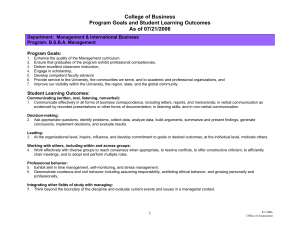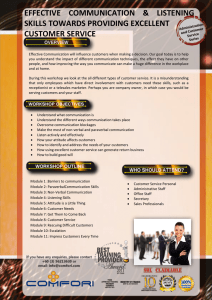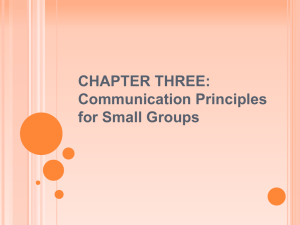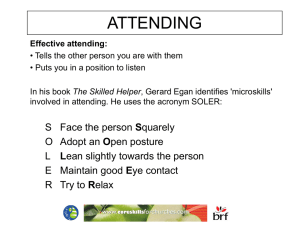Advisement Session
advertisement
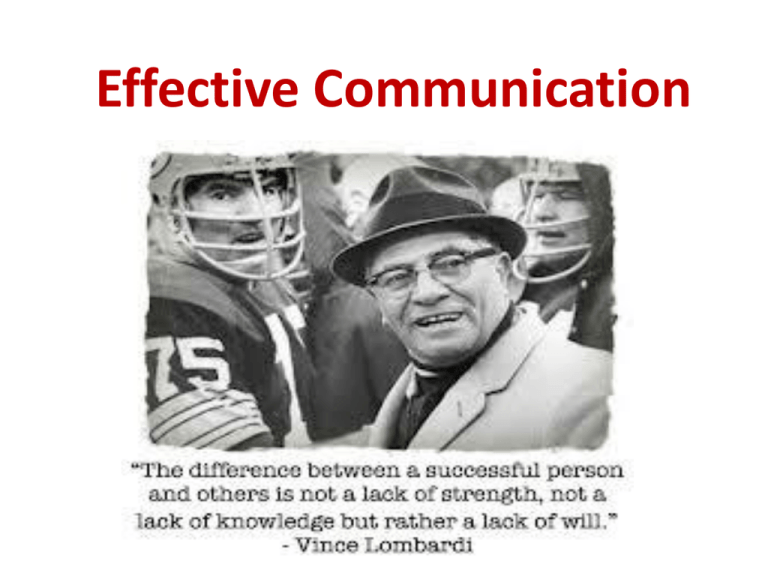
Effective Communication Objectives A2 Acquire Skills for Improving Learning A:A2.2 Demonstrate how effort and persistence positively affect learning A:A2.3 Use communications skills to know when and how to ask for help when needed A:A2.4 Apply knowledge and learning styles to positively influence school performance PS:A2 Acquire Interpersonal Skills PS:A2.6 Use effective communications skills PS:A2.7 Know that communication involves speaking, listening and nonverbal behavior DEFINITION OF COMMUNICATION Communication can be defined in many ways. In simple terms communication is: • Information transmitted • A verbal or nonverbal message • A process by which information is exchanged between individuals through a common system of symbols, signs, or behavior Common Non-Verbal Communication Looking at these photos, what are these people saying or doing without speaking? Non-Verbal Communication in Sports Non-Verbal Messages • • • • • Our emotions leak through our facial expressions and bodily gestures Facial expressions tell us much about what someone is feeling, in particular the mouth and lips Eye contact is needed initially to establish interest. Avoidance of eye contact may indicate disinterest, guilt, or sometimes shyness People also reveal their attitudes by the way they stand or sit or move various parts of their bodies. People who lean forward in their seat to speak or listen indicate more interest in communicating with us than those who remain slouched in a chair. Nodding the head helps the flow of conversation as it reinforces the speaker. COMMUNICATION TOOLS There are four basic communication tools: • • • • Listening Speaking Reading Writing Of the above, which one are we not taught? Barriers to Effective Listening We can think faster than a speaker can talk, and jump to conclusions • • • • We are distracted and allow our minds to wander We lose patience, and decide we are not interested We overreact to what's said and respond emotionally We interrupt Communication Styles When and Where Using slang amongst your friends may be okay; however, you must be able to adjust your communication style in other situations where you can convey your thoughts in a manner which is appropriate and understandable for the intended audience Expand your Vocabulary by challenging yourself to learn new words! READ A DICTIONARY!! Listening Activity Delivering the Message Divide your students into two groups and have them stand on one side of your classroom • Give the first student in line a memo to read, and tell them to memorize it. Once he or she has memorized the memo, take the memo away from them. • Advise the first person to whisper what he read to the second person in line, • Once the second person feels comfortable in what they heard, they will then tell the third person • Continue this process until the message is shared with all students in that line At the end, ask the last student what message did he or she receive….compare it to the original message. The key to this activity is to notice how a message can change once it is communicated to several people. EYE CONTACT ACTIVITY Eye contact is a very important factor in effective communication. Seek volunteers to come forward and have them recite the alphabet as they walk around and make eye contact with every student in the classroom NOTE They must make eye contact with every student while reciting the alphabet. If they go too fast (before making eye contact with every student) then they must start over at the beginning of the alphabet.
